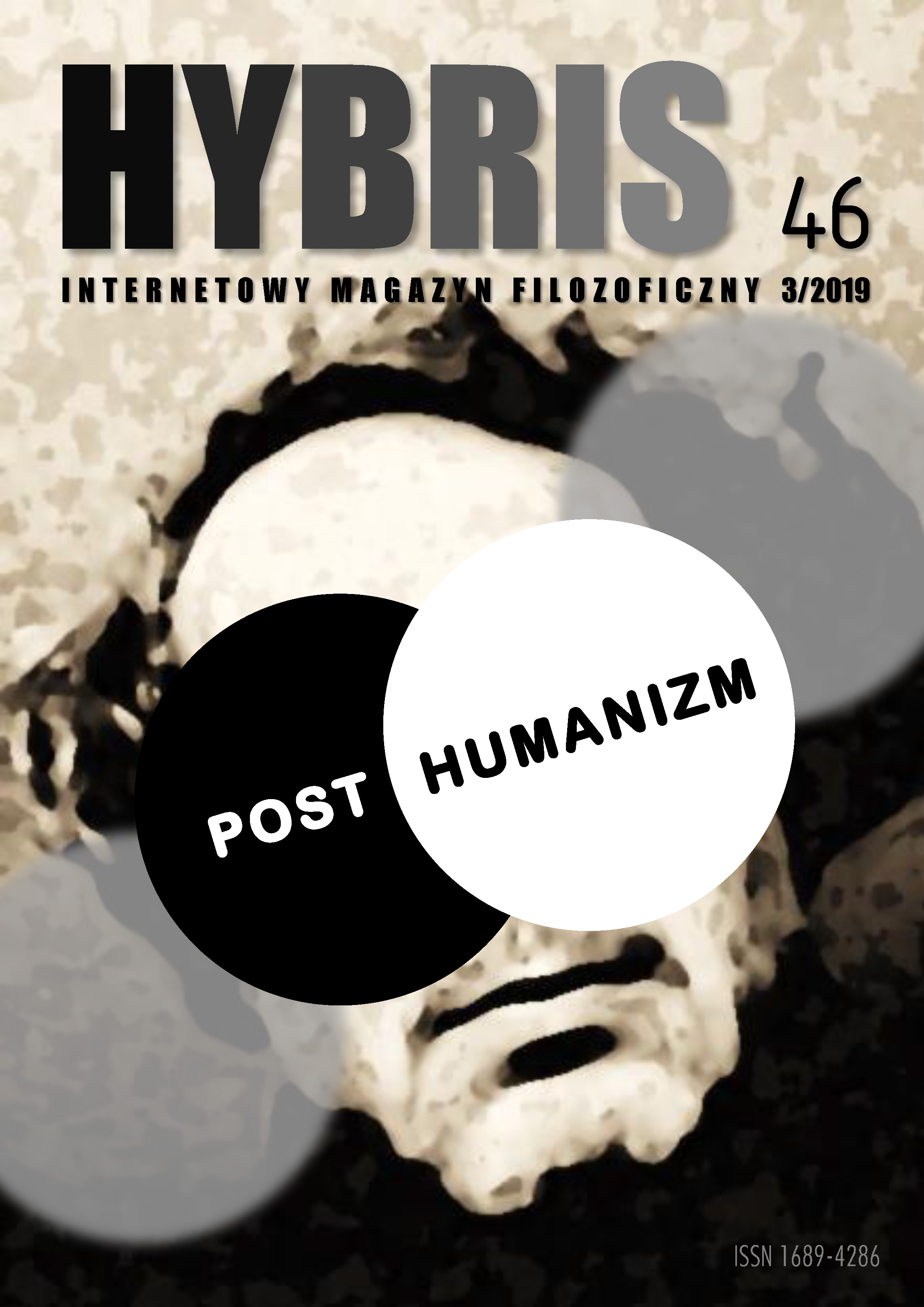Rozum wyzwolony. „Golem XIV” jako przykład osobliwości technologicznej
DOI:
https://doi.org/10.18778/1689-4286.46.05Słowa kluczowe:
Stanisław Lem, osobliwość, sztuczna inteligencja, transhumanizmAbstrakt
One of the most important transhumanistic ideas is singularity which can be described as a horizon of events, prediction horizon, transitional phase or emergence of conscious artificial intelligence. So nowadays it has different references. This article is an attempt to illustrate singularity based on Stanisław Lem’s novel and philosophical essay Golem XIV. This novel shows how the evolution of AI from ordinary computer to artificial conscious superintelligence could look like. It is also an illustration of possible relations between human and non- human intelligence. Lem appears here as philosopher and visionary who tries to think about the future, when human creates a being more perfect than himself. He is far from vision of omnipotence of computers.
Bibliografia
Bostrom, N. (2016). Superinteligencja. Scenariusze, strategie, zagrożenia. Przeł. Konowrocka-Sawa D., Gliwice: HELION.
Zobacz w Google Scholar
Bremer, J. (2010). Wprowadzenie do filozofii umysłu. Kraków: Wydawnictwo WAM.
Zobacz w Google Scholar
Ciechanowicz, J. (1999). Konstanty Ciołkowski czyli Kosmos Szczęśliwy. Rzeszów.
Zobacz w Google Scholar
Flasiński, M. (2011). Wstęp do sztucznej inteligencji. Warszawa: Wydawnictwo Naukowe PWN.
Zobacz w Google Scholar
Good, J. I. (1965). Speculations Concerning the First Ultraintelligent Machine. Advances in Computers, 6, s. 31 – 88.
Zobacz w Google Scholar
DOI: https://doi.org/10.1016/S0065-2458(08)60418-0
Future Trajectories: Singularity. (2018). W: N. Vita-More, M. More (eds.), The Transhumanist Reader. Classical and Contemporary Essays on the Science, Technology, and Philosophy of the Human Future (361 – 363). Chichester: John Wiley & Sons, Inc., Publication.
Zobacz w Google Scholar
Jarzębski, J. (2002). Wszechświat Lema. Kraków: Wydawnictwo Literackie.
Zobacz w Google Scholar
Jarzębski, J. (2018). Z przyszłych dziejów rozumu. https://solaris.lem.pl/ksiazki/apokryfy/golem14/157-poslowie-golem14 [dostęp z dn. 15.11.2018].
Zobacz w Google Scholar
Klichowski, M. (2014). Narodziny cyborgizacji. Nowa eugenika, transhumanizm i zmierzch edukacji, Poznań: Wydawnictwo Naukowe UAM.
Zobacz w Google Scholar
Kurzweil, R. (2013). Nadchodzi osobliwość. Kiedy człowiek przekroczy granice biologii. Przeł. E. Chodkowska E., Nowosielska A.. Warszawa: Kurhaus Publishing.
Zobacz w Google Scholar
Lem, S. (1981). Golem XIV. Kraków: Wydawnictwo Literackie.
Zobacz w Google Scholar
Lem, S. (1968). Opowieści o pilocie Pirxie, Kraków: Wydawnictwo Literackie.
Zobacz w Google Scholar
Sandberg, A. (2013). An Overview of Models of Technological Singularity. W: N. Vita-More, M. More (eds.), The Transhumanist Reader. Classical and Contemporary Essays on the Science, Technology, and Philosophy of the Human Future (376 – 394). Chichester: John Wiley & Sons, Inc., Publication.
Zobacz w Google Scholar
DOI: https://doi.org/10.1002/9781118555927.ch36
Szpakowska, M. (1996). Dyskusje ze Stanisławem Lemem, Warszawa: Open.
Zobacz w Google Scholar
Vinge, V. (2013). Technological Singularity. W: N. Vita-More, M. More (eds.), The Transhumanist Reader. Classical and Contemporary Essays on the Science, Technology, and Philosophy of the Future (365 – 375). Chichester: John Wiley & Sons, Inc., Publication.
Zobacz w Google Scholar
DOI: https://doi.org/10.1002/9781118555927.ch35
Pobrania
Opublikowane
Jak cytować
Numer
Dział
Licencja

Utwór dostępny jest na licencji Creative Commons Uznanie autorstwa – Użycie niekomercyjne – Bez utworów zależnych 4.0 Międzynarodowe.






